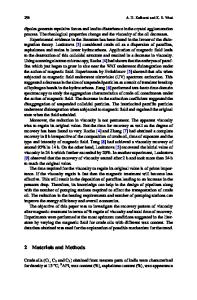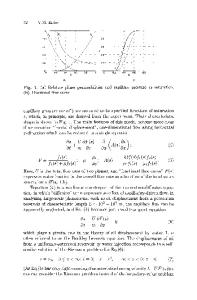Effects of nanocomposite polymer flooding on Egyptian crude oil recovery
- PDF / 776,822 Bytes
- 9 Pages / 595.276 x 790.866 pts Page_size
- 65 Downloads / 381 Views
ORIGINAL PAPER-PRODUCTION ENGINEERING
Effects of nanocomposite polymer flooding on Egyptian crude oil recovery M. E. Helmi1 · M. Abu El Ela2 · S. M. Desouky1 · M. H. Sayyouh2 Received: 16 February 2020 / Accepted: 15 July 2020 © The Author(s) 2020
Abstract In this work, a laboratory study of enhanced oil recovery (EOR) was carried out using Egyptian crude oil of 37°API extracted from a reservoir in the Western Desert to identify the optimum conditions for the application of locally prepared nanocomposite polymer flooding under harsh reservoir condition. In contrary to the other studies, we tested the ability of nanocomposite polymer where nanoparticles are involved in the polymer matrix during polymerization process. Measurements of viscosity and shear rate of several solutions were taken. Displacement runs were conducted at different conditions of nanocomposite polymer salinities (10,000, 20,000, 30,000, 40,000, 50,000, 60,000 and 65,000 ppm), concentrations (1, 1.5, 2, 2.5, 3, 3.5 and 4 g/L) and slug sizes (0.2, 0.4, 0.6 and 0.8 PV). A linear sandpack (length of 62.5 cm and diameter of 2″) was prepared and wrapped with thermal jacket to simulate several reservoir temperatures. It was filled by selected sand size to produce linear sandpack model with reasonable porosity (22%) and permeability (129–157 mD) values. The model was used to perform several displacements runs for waterflooding and nanocomposite polymer flooding. The results of the flood runs are analyzed using the water–oil relative permeability curves. The measurements of the solutions properties showed that the critical concentration of the used nanocomposite polymer in the solution is 2 g/L. Also, it was observed that the used nanocomposite polymer solution could withstand a salinity of 60,000 ppm. As a result of the flooding, it was found that the optimum economical slug size of the used nanocomposite polymer is 0.4 PV at reservoir temperature of 40 °C. The results indicated also that the used nanocomposite polymer could withstand a reservoir temperature of 90 °C. The water–oil relative permeability curves showed an enhancement of oil relative permeability and a decrease in the water relative permeability using nanocomposite polymer over waterflooding. The cost of the used nanocomposite polymer with a concentration of 2 g/L and slug size of 0.4 PV is 0.626 $ for each barrel of the incremental oil recovery. Based on the results of this work, it is clear that involving nanoparticles such as silica in the polymer matrix composition improves its properties, thermal and salinity resistivity. Such study is an original contribution to carry out successful nanocomposite polymer EOR projects. Keywords Nanocomposite polymer · Critical concentration · Optimum slug size · Economics analysis
Introduction Recently, nanotechnology is considered as one of the most interesting areas for current research and development in all technical branches especially oil and gas branch. Hence, polymer nanocomposites based on nanoparticles such as silica, aluminum and coppe
Data Loading...











